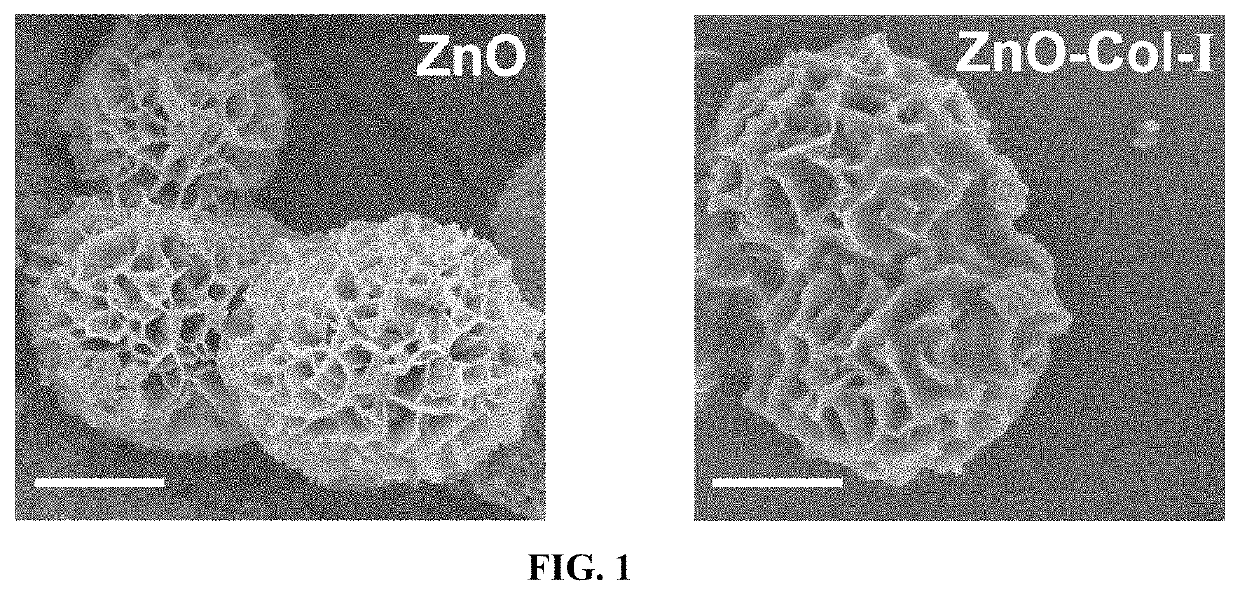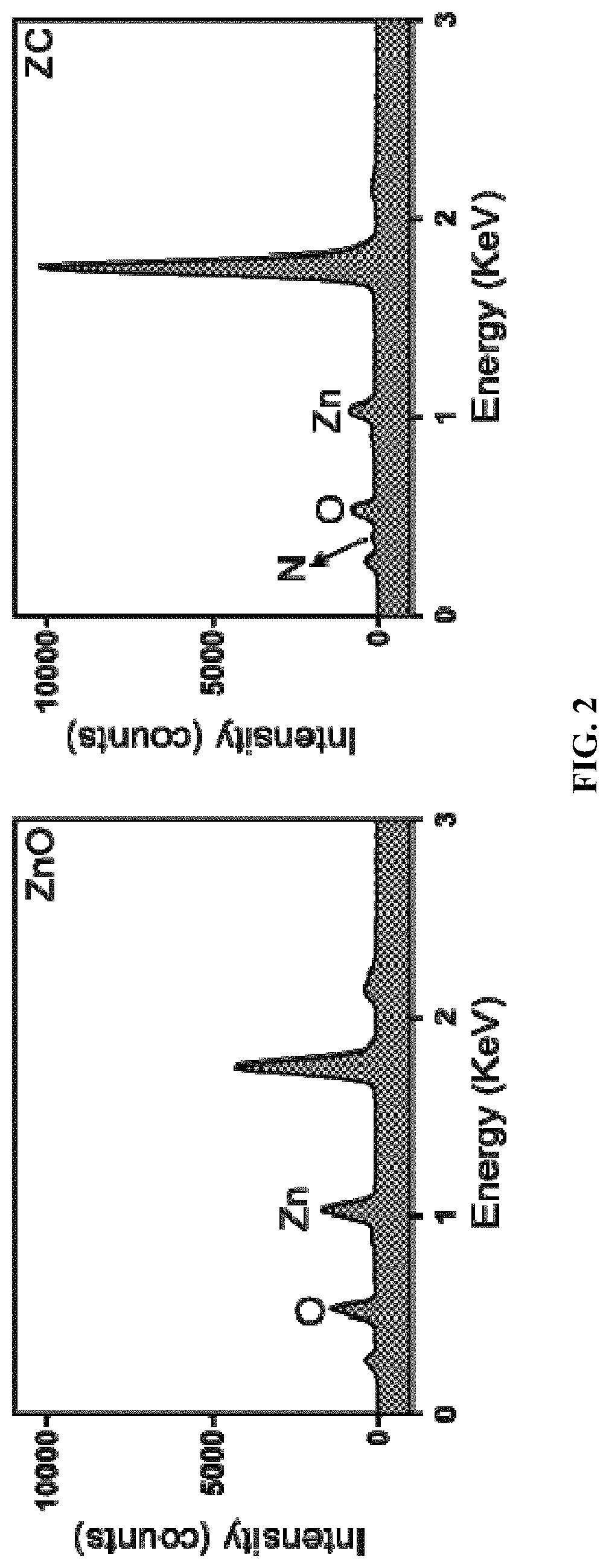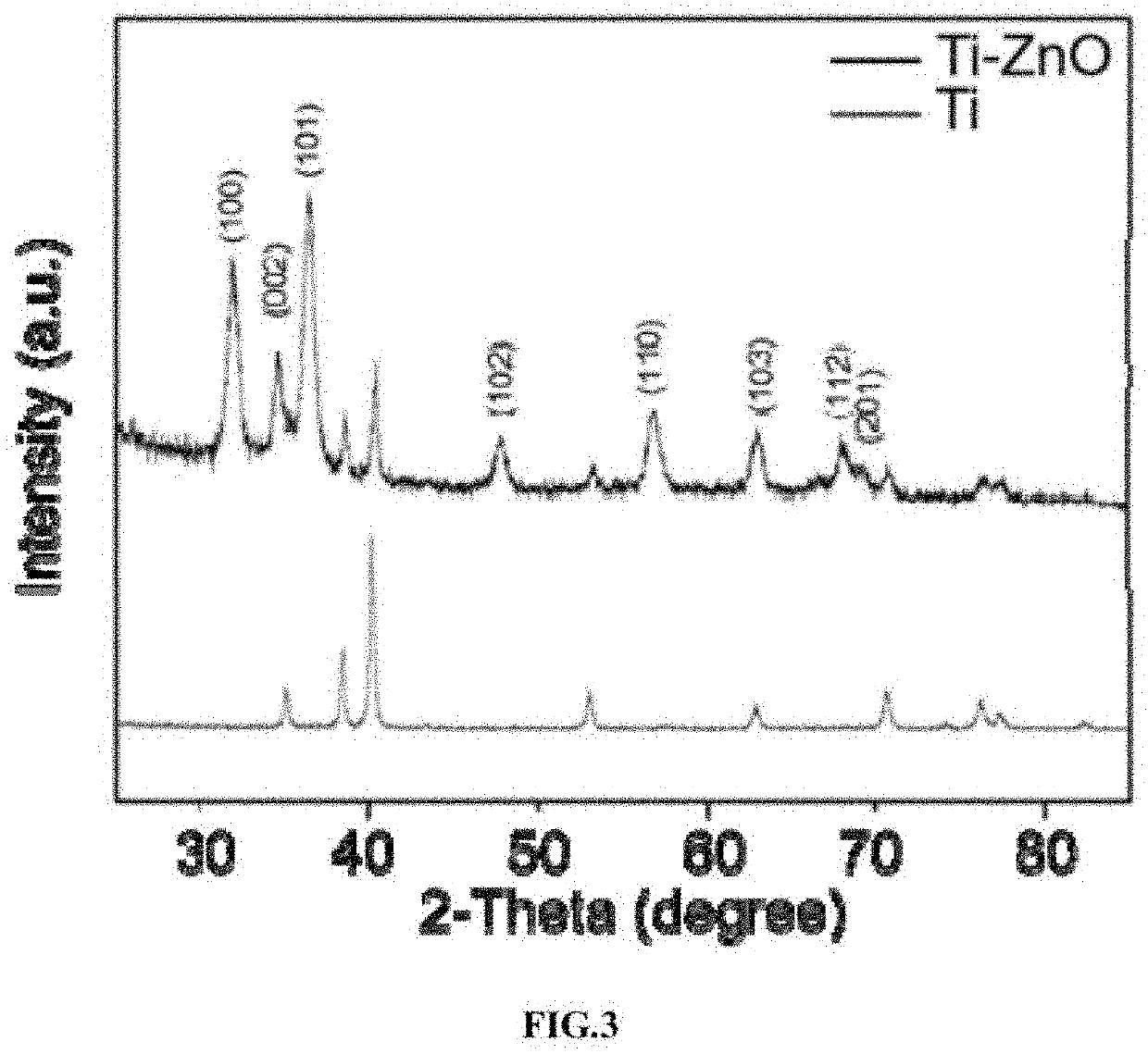Dual light-responsive zinc oxide and preparation method thereof as well as photosensitive coating with antibacterial/osteogenic properties
- Summary
- Abstract
- Description
- Claims
- Application Information
AI Technical Summary
Benefits of technology
Problems solved by technology
Method used
Image
Examples
embodiment 1
[0058
[0059]50 mmol (1.4875 g) Zn(NO3)2.6H2O, 25 mmol (0.3505 g) HMT were dissolved in 100 mL deionized water, sealed and stirred for 10 min. After heating in a water bath at 65° C. for 15 min, 0.14 g Na3C6H5O7, 0.1 g HPMC, 0.025 g activated carbon and 0.1 g lignin were added, while maintaining the water bath at 85° C. for 10 h. They were washed with anhydrous ethyl alcohol for 2 times, and washed with deionized water for 2 times, both of which were centrifugal washing at a rotating speed of 7000 rpm, and the time of single washing was 15 min. After then, they were pre-frozen at −80° C. and then lyophilized in vacuum for 12 h. The resulting products were subjected to microwave irradiation at a power of 800 W for 15 min to get the dual light-responsive ZnO powder. The ZnO prepared in embodiment 1 were used in subsequent experiments.
embodiment 2
[0060
[0061]1. Preparation of Ti-ZC: The ZnO powder prepared in embodiment 1 and type I collagen powder were added into phosphate buffered saline (PBS buffer) at a mass ratio of 1:1, and stirred at 75 rpm for 2 h to get a suspension, in which the concentration of ZnO powder was 200 μg / mL. The suspension was dropwise added onto the surface of titanium specimen (titanium sheets with a diameter of 10 mm and a thickness of 1 mm), and dried at normal temperature. The resulting titanium samples with coating were marked as Ti-ZC.
[0062]2. Preparation of Ti—ZnO: The same as in 1, except that no type I collagen powder was added and the concentration of ZnO in the suspension was 200 μg / mL. The resulting samples were marked as Ti—ZnO.
[0063]3. Preparation of ZnO-Col-I: By using PBS buffer, the same concentration (200 μg / ml) of ZnO and Col-I were mixed and shaken at 75-80 rpm in a shaker for 2-3 h, to prepare a ZnO-Col-I suspension. The resulting samples were marked as ZnO-Col-I, subsequently refe...
PUM
| Property | Measurement | Unit |
|---|---|---|
| Temperature | aaaaa | aaaaa |
| Temperature | aaaaa | aaaaa |
| Time | aaaaa | aaaaa |
Abstract
Description
Claims
Application Information
 Login to View More
Login to View More - R&D
- Intellectual Property
- Life Sciences
- Materials
- Tech Scout
- Unparalleled Data Quality
- Higher Quality Content
- 60% Fewer Hallucinations
Browse by: Latest US Patents, China's latest patents, Technical Efficacy Thesaurus, Application Domain, Technology Topic, Popular Technical Reports.
© 2025 PatSnap. All rights reserved.Legal|Privacy policy|Modern Slavery Act Transparency Statement|Sitemap|About US| Contact US: help@patsnap.com



